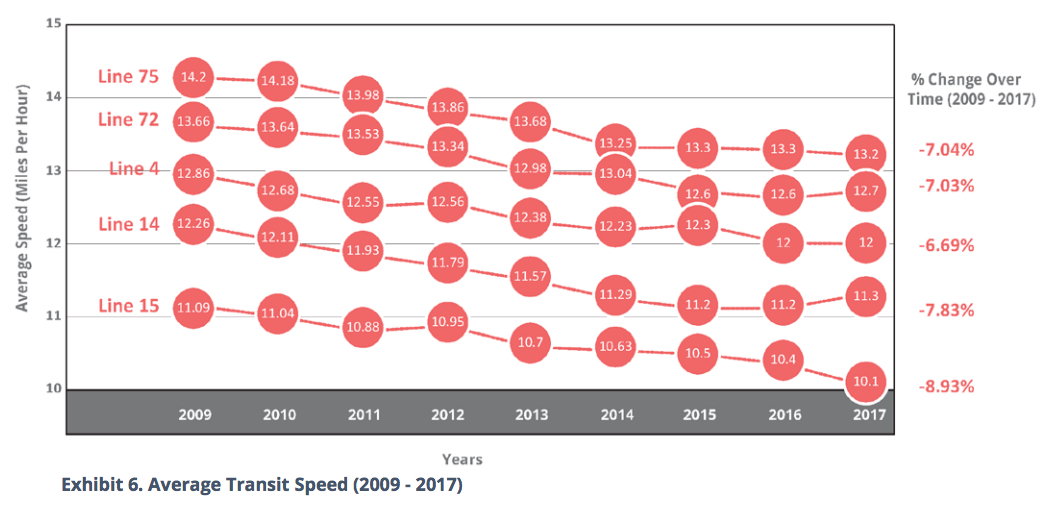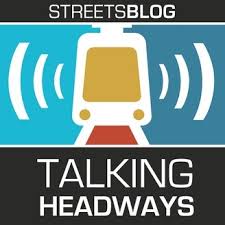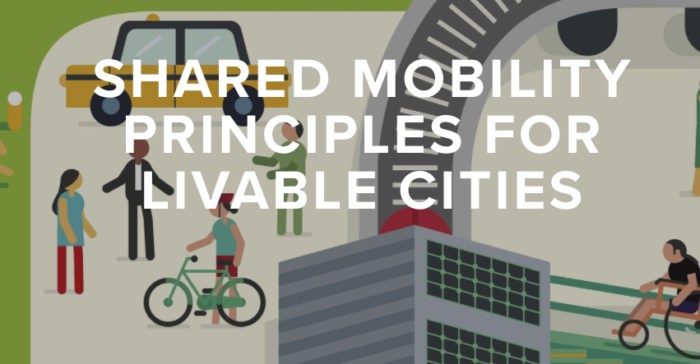In most US cities, the city doesn’t control the transit agency, but it does make huge decisions that largely govern whether transit can succeed. Cities control land use planning, which determines the number of people and jobs that are in places where transit can compete for them, and they control street design, which has a powerful impact on whether buses can operate reliably. Other city functions, like parking and law enforcement, also have a big impact.
So we get great outcomes only when city government takes a strong leadership role on transit, partnering with the transit agency but also leading in the areas that it controls.
Two new plans out of the Portland Bureau of Transportation show the City of Portland rising to that challenge: the Enhanced Transit Corridors Plan, now in public comment, and the Central City in Motion plan, which is just beginning. While the city has nice transit priority policies and has done a few bus lanes before, we’re now seeing an effort to think more systematically about how to get buses moving again.
Short term indicators are not good: Ridership is falling and buses are slowing down. Indeed, bus operating speed is the ultimate boiling frog problem:

Source: Portland Bureau of Transportation, Enhanced Transit Corridors Plan, Feb. 2018, page 9
As traffic grows, speeds fall just gradually enough that the problem never makes the headlines, but a decade of this adds up to a major loss of access to jobs and opportunity. We’re seeing this rate of drop — around 1% a year — in many growing cities we work in. This chart shows the city’s busiest frequent bus lines, which collectively add up to a huge share of the transit ridership.
Losing about 10% over a decade doesn’t just mean that people’s trips are longer, but also that 10% more buses must be deployed to maintain the same frequency, consuming funds that could otherwise be spent on growing the network.
Portland’s Enhanced Transit Corridors plan is the first systematic look at this in a long time. Focusing on the Frequent Network where the stakes are highest, the plan identifies critical points where work must be done to improve performance. The plan doesn’t choose which transit priority treatments to do where; that’s the work of more detailed engineering. But it does lay out the big picture and helps to define priorities. Read the plan and follow it. (There’s also a survey about it, closing March 26)
Many of the most critical problems are around the edges of downtown, where many routes converge on chokepoints — most commonly the bridges — that are also places where traffic converges. The Center City in Motion plan is where those problems will be addressed in detail. There’s also a chance to rethink the role of parallel streets to reduce conflicts between different modes.
This is a big change for Portland. Too often in the past, the city has plan different modes in isolation — the bike network here, the freight network there, a streetcar plan here, the transit agency’s plans over there — when the best solutions arise only from thinking about all the modes together and how they can best share a limited transportation network. I’ve worked on studies that do this, in Seattle and Minneapolis, and it’s great to see Portland finally insisting on this kind of thinking.
If you want to get in the weeds, here’s my own starting wishlist for the Center City in Motion plan:
- Proper transit priority on approach to all of the congested bridges, and between the bridges and the transit mall.
- Integrated planning of bike and transit to reduce bike-transit conflicts.
- Reviewing all the east-west transit routings in downtown, possibly consolidating them onto fewer streets.
- Making better use of the Transit Mall for buses. At this point I wonder if too many routes have been removed from it and we are not getting enough value from our premiere transit priority facility.
- Fixing the unacceptable 5-block separation of the two directions of Line 15-Belmont/23rd downtown.
If you live in Portland, get on the mailing list and share your own views!






